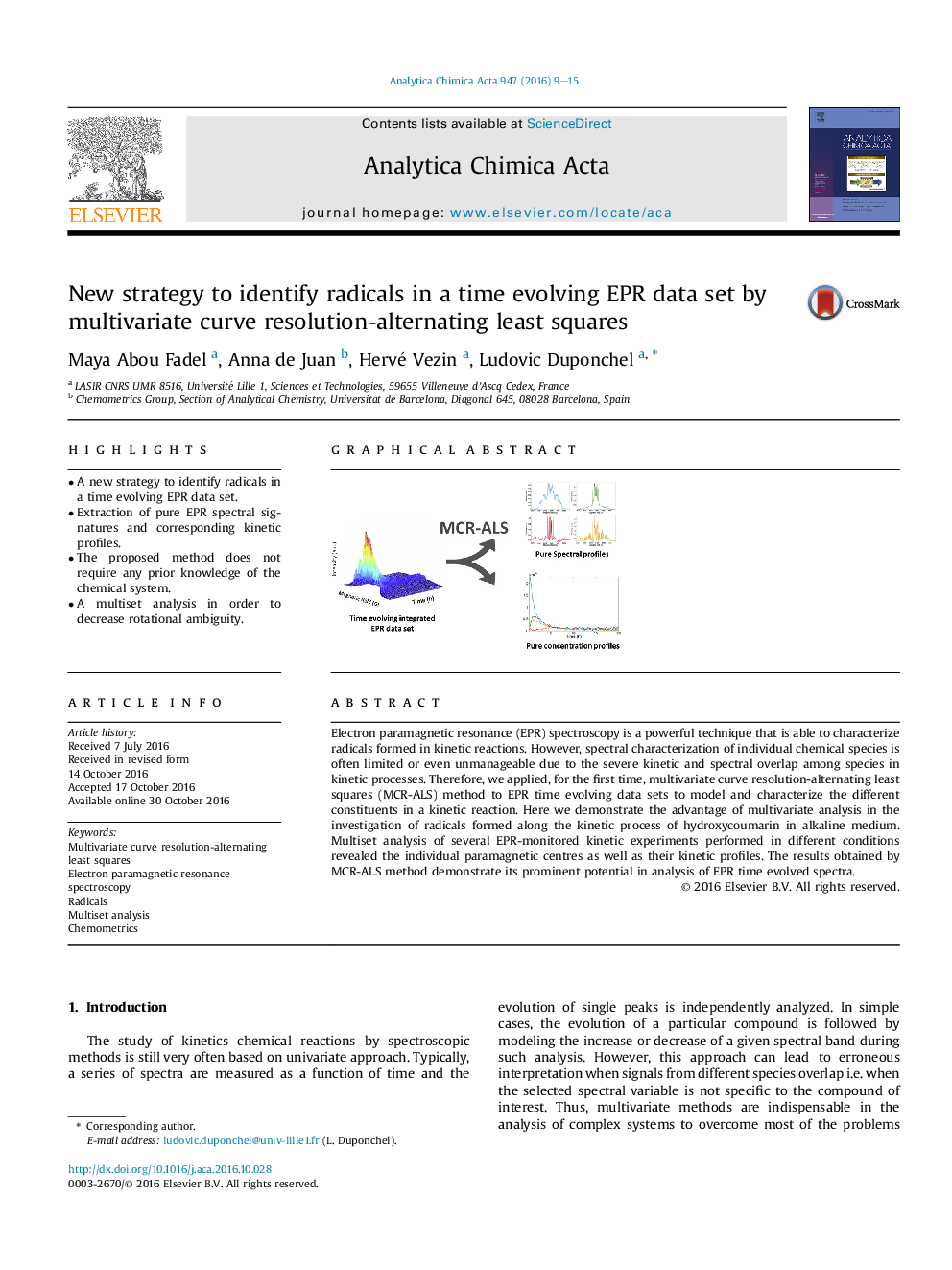| Article ID | Journal | Published Year | Pages | File Type |
|---|---|---|---|---|
| 5131378 | Analytica Chimica Acta | 2016 | 7 Pages |
â¢A new strategy to identify radicals in a time evolving EPR data set.â¢Extraction of pure EPR spectral signatures and corresponding kinetic profiles.â¢The proposed method does not require any prior knowledge of the chemical system.â¢A multiset analysis in order to decrease rotational ambiguity.
Electron paramagnetic resonance (EPR) spectroscopy is a powerful technique that is able to characterize radicals formed in kinetic reactions. However, spectral characterization of individual chemical species is often limited or even unmanageable due to the severe kinetic and spectral overlap among species in kinetic processes. Therefore, we applied, for the first time, multivariate curve resolution-alternating least squares (MCR-ALS) method to EPR time evolving data sets to model and characterize the different constituents in a kinetic reaction. Here we demonstrate the advantage of multivariate analysis in the investigation of radicals formed along the kinetic process of hydroxycoumarin in alkaline medium. Multiset analysis of several EPR-monitored kinetic experiments performed in different conditions revealed the individual paramagnetic centres as well as their kinetic profiles. The results obtained by MCR-ALS method demonstrate its prominent potential in analysis of EPR time evolved spectra.
Graphical abstractDownload full-size image
